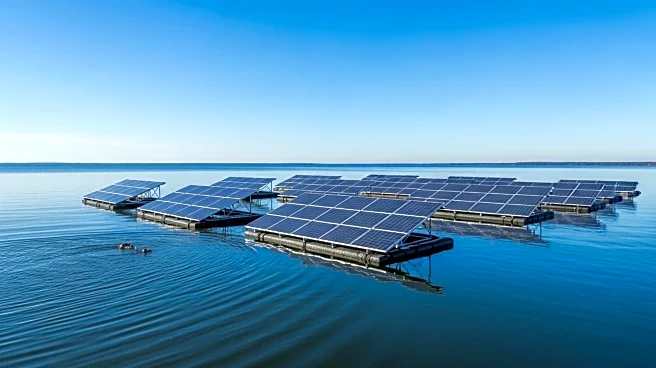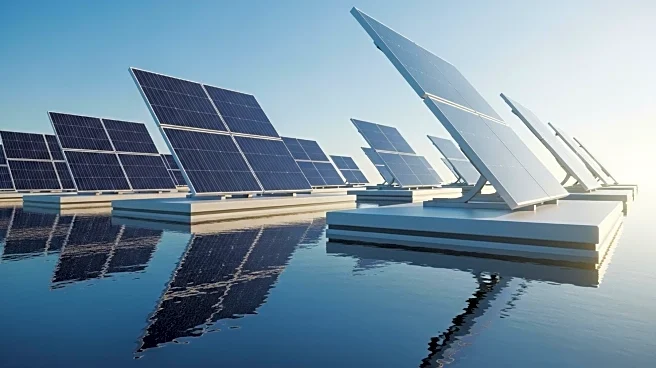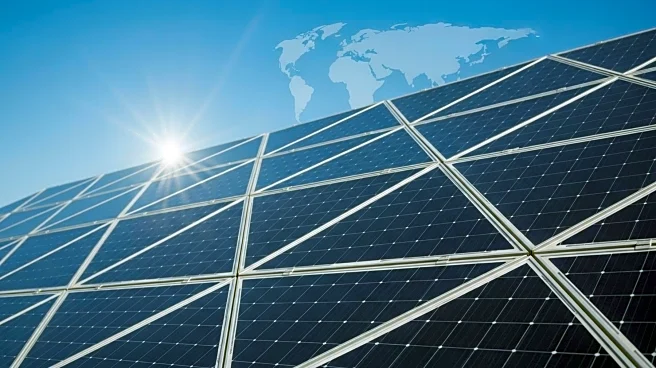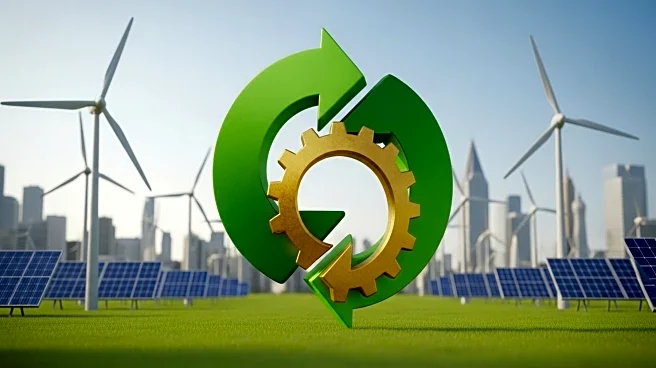What's Happening?
Floating solar technology is gaining traction in the U.S., with Nova Southeastern University becoming the first university to integrate a commercial-level floating solar system. The system, with a capacity of 700 kilowatts, is under construction and will supply electricity to the university's student housing complex. Floating solar systems offer advantages such as reduced land use and water conservation. The technology is also being adopted by water treatment plants, with Ameresco overseeing installations like the Signal Hill Water Treatment Plant in Utah. The initiative is expected to reduce energy costs and grid consumption significantly.
Why It's Important?
Floating solar technology represents a sustainable solution for energy generation, particularly in land-constrained areas. By reducing land development and conserving water, these systems offer environmental and economic benefits. The adoption of floating solar by institutions and water treatment plants highlights its potential for widespread use. As demand for renewable energy grows, floating solar could play a crucial role in meeting energy needs while preserving natural resources. The technology's scalability and efficiency make it an attractive option for various sectors.
What's Next?
The collaboration between Diamond Infrastructure Solutions and Third Pillar Solar in Texas aims to install floating solar systems on reservoirs, potentially generating up to 500 megawatts of clean energy. The initiative represents a significant investment and is expected to be completed by 2030. As floating solar technology continues to develop, it may expand into other regions and industries, offering new opportunities for sustainable energy solutions.











